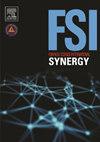Recommendations for victim survivability assessment methodology based on the Manchester Arena Bombing Inquiry
Q1 Social Sciences
引用次数: 0
Abstract
An expert panel was assembled to report on whether either earlier or different medical treatment could have allowed any of the 22 fatalities of the Manchester Arena Bomb to survive. The aim of this paper is to report on the methodology used by the panel, and to make recommendations for future forensic analyses of explosive events.
The panel comprised individuals with a broad range of expertise who received relevant materials from the Inquiry Solicitors. The methodology used was iterative and comprehensive with the panel meeting together at regular points to: sequentially review all the material; conduct detailed analyses on the material; review the outputs of the analyses; reconcile and address any inconsistencies or points of debate; strictly define the following terms: unsurvivable, unlikely to be survivable, and potentially survivable; and report to the Inquiry. A second level of iteration was overlayed on this due to: early reporting being requested by the Solicitors to the Inquiry prior to all information being provided; and the expert panel conclusions being contested by the family of one of the casualties and the medical experts appointed by their legal teams, resulting in further analyses being conducted by the panel. The following detailed analyses were conducted for each fatality: injury scoring; injury visualisation and mapping; forensic three-dimensional post-mortem CT scan analysis; ballistic injury analysis; blood loss analysis; tourniquet use; blast lung injury; and categorisation and survivability.
The panel concluded that 21 individuals suffered unsurvivable injuries and one suffered potentially survivable injuries. In order to complete their tasking, the panel found that: no one piece of evidence and expertise on its own was sufficient; post-mortem CT imaging to assess anatomical damage and body worn video to analyse physiological response were key; and lack of detailed information on survivors hindered the panel's work.
The clarity of outputs provided by the panel with only the conclusion regarding one of the fatalities being contested highlights the robustness of this panel approach. The following recommendations are made that, in addition to the information that was provided to the panel during this Inquiry, the following information be provided during any future forensic analyses of explosive events: the location of survivors, and uninjured; medical records of the survivors; the three-dimensional plans of the location; structural damage records; and building records and construction technique.
基于曼彻斯特竞技场爆炸调查的受害者生存能力评估方法建议
成立了一个专家小组,报告是否有更早的治疗或不同的治疗可以使曼彻斯特竞技场爆炸事件中22名死者中的任何一人幸存下来。本文的目的是报告专家组使用的方法,并为今后爆炸事件的法医分析提出建议。该小组由具有广泛专业知识的人士组成,他们从质询律师处收到有关材料。所使用的方法是迭代的和全面的,并定期举行小组会议,以便:依次审查所有材料;对物料进行详细分析;审查分析的结果;调解和解决任何矛盾或争论点;严格定义以下术语:无法生存,不太可能生存,潜在生存;并向调查委员会报告。由于:在提供所有信息之前,律师要求提前向调查报告;专家小组的结论受到一名受伤者家属及其法律小组任命的医疗专家的质疑,导致专家小组进行了进一步的分析。对每个死亡病例进行了以下详细分析:损伤评分;损伤可视化和制图;法医三维死后CT扫描分析;弹道损伤分析;失血分析;止血带使用;爆炸性肺损伤;分类和生存能力。调查小组的结论是,21人遭受了无法存活的伤害,一人遭受了可能存活的伤害。为了完成他们的任务,小组发现:没有一项证据和专门知识本身是足够的;尸检CT成像评估解剖损伤和身体磨损录像分析生理反应是关键;缺乏幸存者的详细信息也阻碍了调查小组的工作。小组所提供的产出十分明确,仅就一宗有争议的死亡案件得出结论,这突出表明了小组方法的稳健性。兹提出以下建议,除了调查期间向专家组提供的资料外,今后对爆炸事件进行法医分析时还应提供下列资料:幸存者和未受伤人员的位置;幸存者的医疗记录;场地的三维平面图;结构损伤记录;以及建筑记录和施工技术。
本文章由计算机程序翻译,如有差异,请以英文原文为准。
求助全文
约1分钟内获得全文
求助全文
来源期刊

Forensic Science International: Synergy
Social Sciences-Law
CiteScore
4.90
自引率
0.00%
发文量
75
审稿时长
90 days
 求助内容:
求助内容: 应助结果提醒方式:
应助结果提醒方式:


